
Filter News
Area of Research
- (-) Energy Science (45)
- (-) Nuclear Science and Technology (16)
- Advanced Manufacturing (3)
- Biological Systems (1)
- Biology and Environment (19)
- Computational Biology (1)
- Fusion and Fission (19)
- Fusion Energy (4)
- Isotopes (18)
- Materials (37)
- Materials for Computing (5)
- National Security (6)
- Neutron Science (20)
- Supercomputing (22)
News Topics
- (-) 3-D Printing/Advanced Manufacturing (24)
- (-) Biomedical (2)
- (-) Energy Storage (20)
- (-) Isotopes (2)
- (-) Materials Science (6)
- (-) Mercury (1)
- (-) Nuclear Energy (18)
- (-) Physics (1)
- (-) Space Exploration (2)
- Advanced Reactors (6)
- Artificial Intelligence (2)
- Bioenergy (10)
- Biology (4)
- Biotechnology (1)
- Buildings (11)
- Chemical Sciences (3)
- Clean Water (3)
- Composites (2)
- Computer Science (8)
- Coronavirus (6)
- Cybersecurity (5)
- Environment (18)
- Fossil Energy (1)
- Fusion (6)
- Grid (13)
- High-Performance Computing (2)
- Hydropower (1)
- Materials (5)
- Mathematics (1)
- Microelectronics (1)
- Microscopy (2)
- Molten Salt (1)
- Nanotechnology (2)
- National Security (1)
- Neutron Science (3)
- Partnerships (4)
- Polymers (1)
- Quantum Science (1)
- Security (3)
- Simulation (1)
- Summit (2)
- Transportation (17)
Media Contacts
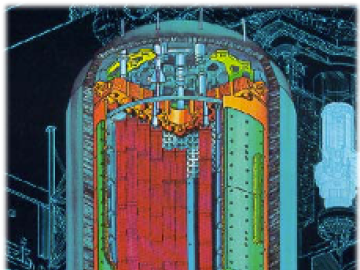
A software package, 10 years in the making, that can predict the behavior of nuclear reactors’ cores with stunning accuracy has been licensed commercially for the first time.
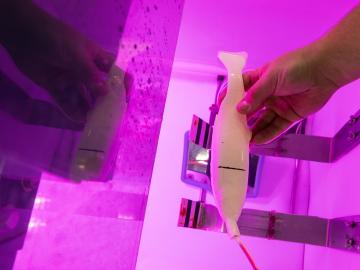
Hydropower developers must consider many factors when it comes time to license a new project or renew an existing one: How can environmental impacts be mitigated, including to fish populations?
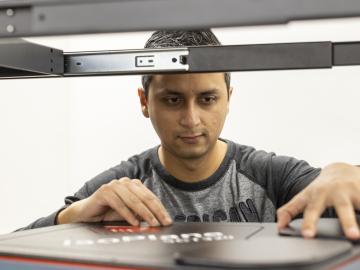
The techniques Theodore Biewer and his colleagues are using to measure whether plasma has the right conditions to create fusion have been around awhile.
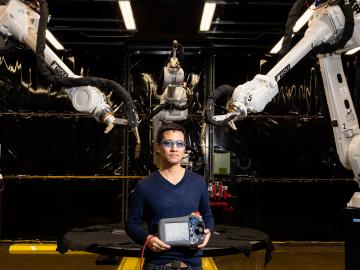
Peter Wang is focused on robotics and automation at the Department of Energy’s Manufacturing Demonstration Facility at ORNL, working on high-profile projects such as the MedUSA, a large-scale hybrid additive manufacturing machine.
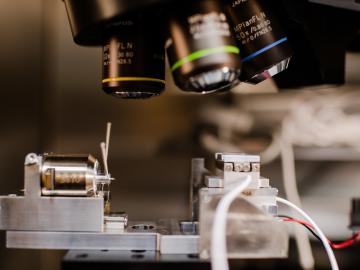
The formation of lithium dendrites is still a mystery, but materials engineers study the conditions that enable dendrites and how to stop them.
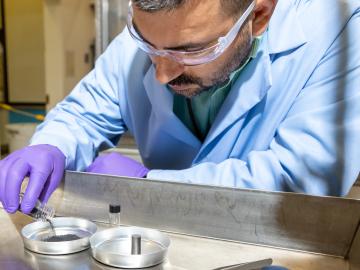
Ask Tyler Gerczak to find a negative in working at the Department of Energy’s Oak Ridge National Laboratory, and his only complaint is the summer weather. It is not as forgiving as the summers in Pulaski, Wisconsin, his hometown.

Sometimes solutions to the biggest problems can be found in the smallest details. The work of biochemist Alex Johs at Oak Ridge National Laboratory bears this out, as he focuses on understanding protein structures and molecular interactions to resolve complex global problems like the spread of mercury pollution in waterways and the food supply.
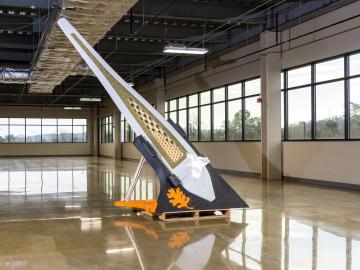
In the shifting landscape of global manufacturing, American ingenuity is once again giving U.S companies an edge with radical productivity improvements as a result of advanced materials and robotic systems developed at the Department of Energy’s Manufacturing Demonstration Facility (MDF) at Oak Ridge National Laboratory.

Scientists have demonstrated a new bio-inspired material for an eco-friendly and cost-effective approach to recovering uranium from seawater.

When Scott Smith looks at a machine tool, he thinks not about what the powerful equipment used to shape metal can do – he’s imagining what it could do with the right added parts and strategies. As ORNL’s leader for a newly formed group, Machining and Machine Tool Research, Smith will have the opportunity to do just that.


